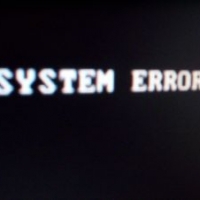Why the Government Health Care Site Launch Was Doomed from the Start

The October 1, 2013, implementation of the Affordable Care Act in the United States prompted the same-day launch of a government website—HealthCare.gov—to help people compare and purchase health insurance coverage. Almost immediately after going live, the website crashed.
Last week the administration said that the trouble came from an unanticipated surge of traffic. US Chief Technology Officer Todd Park said the government expected the site to draw fifty thousand to sixty thousand users at once, but it was hit with as many as two hundred fifty thousand users at once.
In addition to long wait times, users reported glitches such as neverending loops, inability to create accounts, not being recognized after creating an account, missing information, and miscalculated subsidies. And the response? Enrollment functions were shut down at off-peak hours over the weekend so technicians could make repairs and increase the number of simultaneous users the website can handle.
“These bugs were functions of volume,” Park said. “Take away the volume and it works.”
But some critics say the problem isn’t in faulty code or the failure to execute adequate load tests. It’s simply another example of the US government’s tendency to use outdated, expensive, and flawed technology.
From The Washington Post:
The U.S. government spends more than $80 billion a year for information-technology services, yet the resulting systems typically take years to build and often are cumbersome when they launch. While the error messages, long waits and other problems with www.healthcare.gov have been spotlighted by the high-profile nature of its launch and unexpectedly heavy demands on the system, such glitches are common, say those who argue for a nimbler procurement system.
Many people disappointed in the website’s functionality pointed to the fact that Barack Obama, the most tech-savvy president to date, had a slick and effective online presence in his two election campaigns. But those efforts were orchestrated by cutting-edge programmers from tech startups—not government agencies which often are short on staff and outsource work to larger contractors.
True, the Department of Health and Human Services, tasked with creating HealthCare.gov on a tight deadline, contracted the job out to what appears to be between twelve and fifteen firms, said Alex Howard, a fellow at the Harvard Ash Center for Democratic Governance and Innovation.
Government contracts usually are awarded to the lowest bidder, and there are special requirements necessary, such as security clearances and federal certification. This restricts some of the smaller, more agile teams from applying. “The firms that typically get contracts are the firms that are good at getting contracts, not typically good at executing on them,” Howard said.
One reason why all the shortcomings of HealthCare.gov aren’t readily apparent or easily fixed is that the code is not open source, a fact that dismayed some software developers who would be willing to help reconstruct the site.
“I was talking to some of my engineers about how we would love to be able to pitch in a few bug fixes or help with some open source code of our own,” said John Pavley, CTO of The Huffington Post. “I heard so many good things when the Obama administration came in, but if we're going to continue to build software this way it's going to continue to fail.”

